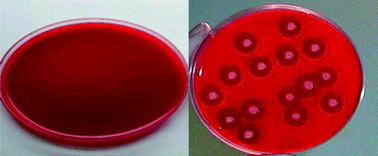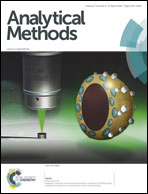Immunodetection of Bacillus cereus haemolytic enterotoxin (HBL) in food samples
Abstract
In recent years food safety has been a global concern. Foodborne pathogens play a key role in food contamination and affect human health. Bacillus cereus, a foodborne pathogen, causes gastroenteritis-like symptoms, resulting in vomiting and diarrhea. Bacillus cereus produces four different types of diarrheal toxins. In this paper we describe a quantitative and sensitive Enzyme Linked Immuno Sorbent Assay (ELISA) method for the detection of one of the diarrheal toxins – haemolytic enterotoxin (HBL) – using avian antibodies (IgY). The antibody reaction was optimized for different concentrations of antigen and antibody dilutions. Antigen concentration of 20 ng protein and antibody concentration of 200 ng protein were observed to be optimum for the reaction. Cross reactivity with other foodborne pathogens was less than 5% in competitive ELISA. The detection range and the detection limit were 1 μg to 1 pg, and 250 pg, respectively. The inhibition concentration (IC50) value of this avian antibody was 473.4 ng. Spiked recovery studies in different food samples showed that the avian antibodies could recognize B. cereus haemolytic enterotoxin (HBL) in food samples with negligible matrix interference.


 Please wait while we load your content...
Please wait while we load your content...